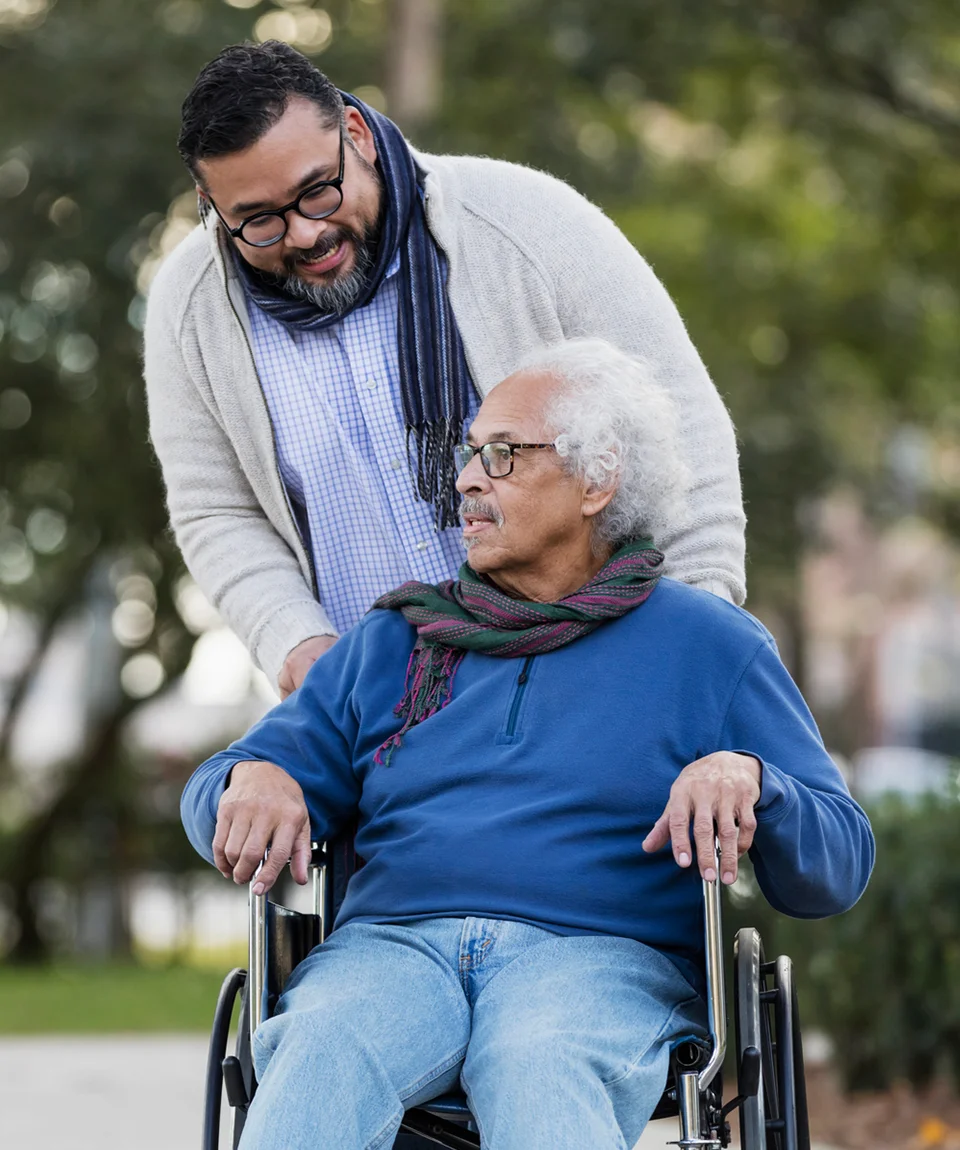What is a TIA?
A transient ischemic attack – or mini stroke – is caused by a small clot that briefly blocks an artery. TIA and minor ischemic stroke fall along a continuum. TIA symptoms disappear completely within 24 hours (usually within one hour). If any symptoms still exist after 24 hours, then it would be considered a stroke, not a TIA. A TIA can be a warning of a future stroke. It is a medical emergency. Call 9-1-1 or your local emergency number immediately, do not wait.
What are the symptoms of a TIA?
The word FAST is an easy way to recognize the symptoms of a TIA or a stroke.

If you think you are having a TIA or a stroke, call 9-1-1. A TIA is an important warning that a more serious stroke may occur soon.
If you are not admitted to a hospital, ask when you will be seen at a stroke prevention clinic and how that is arranged.
What causes a TIA?
The most common causes of a TIA are a blood clot or a buildup of plaque in your arteries. Both reduce blood flow to your brain.
What are the risk factors for a TIA?
Things you cannot change
- sex
- age
- family and medical history
- South Asian and African heritage
- Indigenous heritage
- personal circumstances and environmental factors such as access to healthy food, safe drinking water, health services and social services
Medical conditions
- high blood pressure (hypertension)
- atrial fibrillation (Afib)
- diabetes
- coronary artery disease
- high cholesterol
- sleep apnea
- pre-eclampsia (high blood pressure during pregnancy)
- pregnancy
- other medical conditions such as cancer or heart disease
Lifestyle risk factors
- unhealthy diet
- too much salt
- not enough exercise
- unhealthy weight
- smoking and vaping
- heavy or binge drinking
- stress
- recreational drug use
- use of oral contraceptives or hormone replacement therapy (especially if high in estrogen)
How can you lower your risk of a TIA?
The good news is that healthy lifestyle habits can protect your health and lower your risk of stroke and TIA. These habits will help you to keep a healthy weight, prevent or manage high blood pressure, manage stress and much more.
Talk to your doctor about a stroke prevention plan. Discuss treating any medical conditions that may affect your risk and which lifestyle changes would be best for you.
Everyday choices to lower your risk
Take your medications as prescribed – managing your medications for medical risks will help you to avoid a stroke or TIA.
Make healthy food choices – eat more vegetables, fruits and whole grains. Eat mostly homemade meals using whole, natural foods. Limit salt, sugar and processed food (like canned soup, cold cuts, frozen meals).
Be more active – aim for 150 minutes a week of physical activity, made up of 10-minute bouts (or more) 4-7 days per week. Look for chances to be more active in your daily routine, such as brisk walking or taking the stairs instead of an escalator. Before starting a physical activity program, speak to your healthcare provider about a plan that is right for you.
Quit smoking and vaping – this is one of the best things you can do to lower your risk. Quitting is hard. Ask for help if you need it by calling 1-866-366-3667.
Drink less alcohol – the guidelines for moderate drinking are fewer than 10 drinks a week for women and 15 drinks a week for men with daily limits of 2 drinks for women and 3 for men. Talk to your healthcare providers if you would like to find a program to help with alcohol problems.
Quit recreational drug use – talk to your healthcare providers if you need help to quit.
Manage stress – understand what causes your stress. Are there ways to reduce or eliminate your stressors? Do things that relax you, like listening to music. When talking to your doctor about your health, include your mental health in the conversation.
Follow these steps
1 Know the signs. Call 9-1-1 if you experience them.
2 Learn about the everyday choices that you can make to reduce your risk factors.
3 Make a personal prevention plan. Keep the big picture in mind and remember what is important to you. To be able to travel? To be able to play with your grandchildren?
What is your prevention plan?
Talk to your healthcare provider about your personal risk factors and the most beneficial lifestyle changes for you to make.
|
My risk factors |
My doctor’s recommendation |
My plan |
|
High blood pressure |
No medications, manage through exercise and diet. |
Walk home from work at least twice a week. |
Recovery after a TIA
It’s normal to feel worried or afraid after a TIA. Find someone you can turn to for emotional support like a family member, friend, doctor, mental health worker or support group. Talking about your challenges and feelings could be an important part of your journey to recovery.
- The recovery and support section of this website is full of practical advice and tips to support you on your recovery journey.
- Join Heart & Stroke’s Community of Survivors or Care Supporters’ Community support groups.
- Find peer support resources here.
- Download or order our free book Your Stroke Journey.
- Sign up for the Heart & Stroke recovery newsletter. Get the latest research news and information, with tips and strategies to help you manage your recovery.
